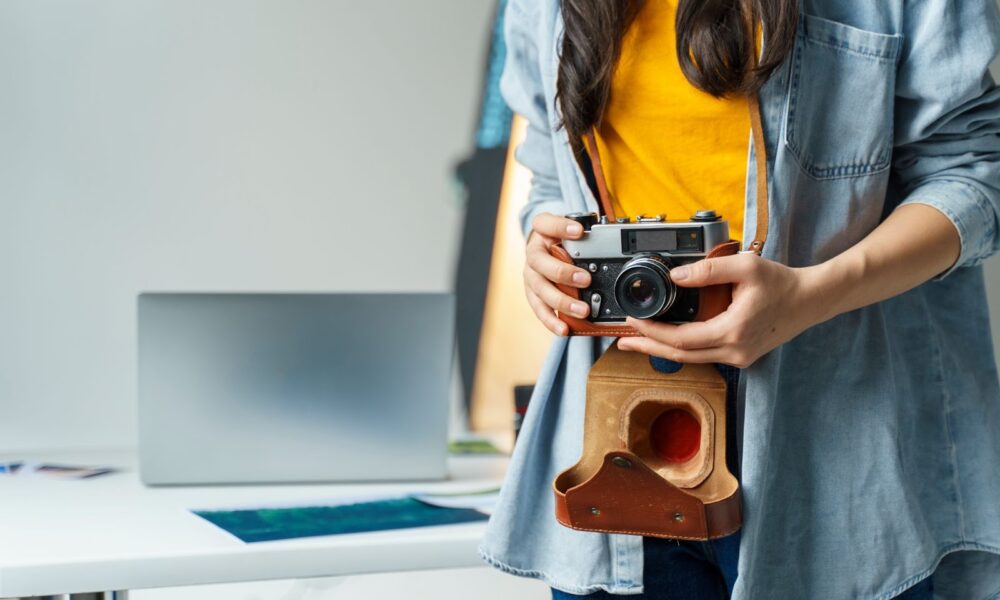In today’s era of digital imagery, where photographs are predominantly consumed through screens of diverse dimensions, the appreciation for the tangible proportions of a printed photo can easily diminish. Nevertheless, for photographers, artists, and individuals engaged in the reproduction or exhibition of visual content, grasping the physical scale of a photograph retains its significance. Among the array of print sizes that have persisted over time, the 8×10 photo stands as a steadfast choice.
So, how big is an 8×10 photo exactly?
Exploring Photo Dimensions and Measurements
Understanding the dimensions of a photograph is crucial for various purposes, whether you’re framing memories, creating art, or displaying professional work. When you encounter the term “8×10 photo,” it signifies specific measurements in inches, denoting 8 inches in width and 10 inches in height. However, there’s more to these dimensions than meets the eye.
Key Points to Consider:
- Standard Sizing: The 8×10 dimension is a common standard in the world of photography and printing. It’s widely used for portraits, landscapes, and various artistic prints;
- Aspect Ratio: The aspect ratio of an 8×10 photo is 4:5, meaning for every 4 units of width, there are 5 units of height. This ratio is often preferred for aesthetic reasons and framing purposes;
- Paper Size Compatibility: While an 8×10 photo refers to the image’s dimensions, it’s essential to note that it also applies to the paper or material it’s printed on. This ensures uniformity and compatibility when framing or mounting the photograph.
Visualizing the Size:
To grasp the size of an 8×10 photo more intuitively, consider a familiar reference point: a standard sheet of letter-sized paper, measuring 8.5 inches by 11 inches. Now, envision the photograph comfortably fitting within these dimensions. Here’s a breakdown:
- Width Comparison: The width of an 8×10 photo is slightly smaller than that of a letter-sized paper, allowing it to nestle neatly within the confines of the page;
- Height Comparison: Despite the slight reduction in width, the height of the 8×10 photo matches closely with that of the letter-sized paper, offering a similar visual presence.
Tips for Visualizing Dimensions:
- Use Visual Aids: Utilize rulers, grids, or digital imaging software to compare sizes accurately and visualize how an 8×10 photo would appear in different contexts;
- Mockup Tools: Explore online mockup generators or software specifically designed for photographers to simulate how various print sizes would look in different frames or settings.
Versatile Applications of 8×10 Photographs
Elegant Display with Standard Frames
The 8×10 photograph size is universally embraced for its perfect compatibility with conventional frames, elevating it to a favored selection for accentuating living spaces and workplaces with cherished photographs or art pieces. This dimension seamlessly integrates into various decor styles, from minimalist to eclectic, allowing for a polished presentation of memories and artistic expressions on walls and desks.
Tips for Framing:
- Choose a frame that complements both the photograph and your room’s decor;
- Consider using a mat to enhance the visual impact of your photo;
- Use UV-protective glass to preserve the color and integrity of your photograph.
Professional Portraiture
In the realm of professional photography, the 8×10 size is prized for its harmonious blend of scale and clarity, providing a canvas that brings individual or group portraits to life with striking detail. This format is adept at capturing the essence of the subject, making it a staple for photographers aiming to immortalize moments with precision and depth.
Portrait Photography Insights:
- Ideal for both close-up headshots and wider group shots;
- Offers enough resolution for minor cropping without sacrificing detail;
- Highly regarded for graduation, engagement, and professional headshots.
Artistic and Photographic Prints
For artists and photographers marketing their creations, the 8×10 format serves as an accessible and appealing option. This size strikes an excellent balance, offering viewers the opportunity to appreciate the intricacies of the image without requiring extensive space for display. It’s a popular choice for art fairs, online shops, and galleries, where potential buyers seek art that is both captivating and convenient to exhibit in residential or professional settings.
Recommendations for Selling Art Prints:
- Provide a variety of frame options or suggestions for potential buyers;
- Consider limited edition runs to increase the collectibility of your prints;
- Ensure high-quality printing to faithfully reproduce the original work’s colors and textures.
Personalized Gifts and Keepsakes
An 8×10 photo transforms into a heartfelt memento when gifted, bridging distances and time with a tangible representation of a shared memory or moment. Whether it’s a spontaneous capture of joy, a breathtaking landscape from travels, or a meticulously composed portrait, this size photo is an ideal keepsake. It serves as a personal, thoughtful gift that conveys warmth and remembrance, making it a perfect choice for birthdays, anniversaries, or as a token of appreciation.
Ideas for Memorable Gifts:
- Personalize the photo with a handwritten note on the back;
- Pair the photo with a custom frame for a ready-to-display gift;
- Consider a collage of moments for milestone celebrations, creating a visual narrative of cherished memories.
Resolution and Quality: Enhancing Your Photographic Prints
When it comes to immortalizing your cherished memories through printed photographs, the resolution serves as the cornerstone of image quality. Picture resolution determines the level of detail and sharpness captured in your prints, making it imperative to choose images with adequate resolution to ensure optimal results. Here’s a comprehensive guide to understanding and optimizing resolution for your photographic prints:

Understanding Resolution:
Resolution, often measured in pixels per inch (PPI) or dots per inch (DPI), denotes the density of pixels within an image. The higher the resolution, the finer the detail and clarity of the print. When printing photographs, achieving the ideal resolution is vital for preserving the integrity of your images.
Tips for Optimal Resolution:
- Aim for a resolution of at least 300 PPI for high-quality prints, ensuring crispness and clarity in the final result;
- Prioritize using original, high-resolution images to maintain fidelity and prevent pixelation or blurriness;
- When resizing or cropping images, be mindful of potential loss of resolution, which can compromise print quality.
- Utilize image editing software to enhance resolution or upscale images if necessary, but exercise caution to avoid artificial distortion.
Exploring Variations and Alternatives:
While the classic 8×10 print size remains popular, there’s a plethora of variations and alternatives to suit diverse preferences and display needs:
- Matte vs. Glossy Finishes:
- Matte Finish: Offers a subtle, non-reflective surface, ideal for minimizing glare and enhancing texture in prints. Well-suited for art photography and black-and-white images;
- Glossy Finish: Provides a shiny, reflective surface that intensifies colors and enhances contrast, lending a vibrant, polished look to photographs. Perfect for vivid landscapes and portrait photography.
- Larger Print Sizes:
- 11×14: Offers a larger canvas for showcasing your images, allowing for greater visual impact and immersive viewing experiences;
- 16×20: Provides expansive dimensions for displaying panoramic shots or intricate details, ideal for making a statement with your photographic artistry.
- Embracing Digital Displays: In an increasingly digital-centric era, digital displays offer a convenient and dynamic way to showcase your photos:
- Digital Frames: Combine the charm of traditional frames with modern technology, rotating through a slideshow of your favorite images;
- Tablets and Smartphones: Utilize high-resolution screens to showcase your photography portfolio or share moments with friends and family, anytime, anywhere.
Conclusion
In the vast expanse of the digital domain, an 8×10 photograph might appear diminutive, amidst the landscape of infinitely resizable images that can grace screens of various sizes. Yet, within the realm of the tangible, its modest dimensions encapsulate cherished memories, profound artistic endeavors, and instances immortalized in the tapestry of time. Whether adorning a wall with its presence, gracing a desk with its charm, or bestowed upon a cherished individual, the 8×10 photograph remains an enduring vessel, preserving and imparting moments of significance with an immutable allure.
